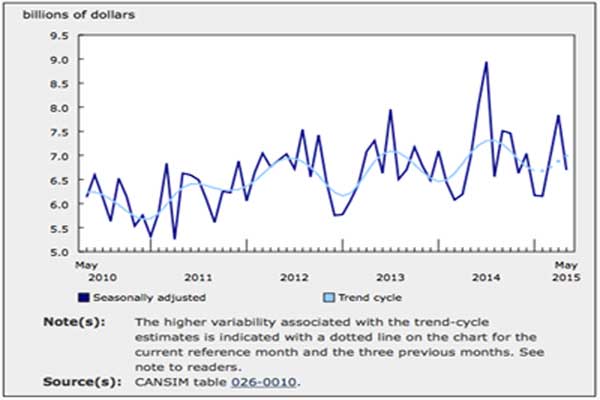Where “High Performance” for Buildings Is Headed: Part 1

August 16, 2016
The high performance building (HPB) landscape is moving beyond simply “green” to encompass a broader range of attributes, such as healthy, productive, and even “resilient” — reflecting a growing attention to the status of the building occupant, not just the building itself. There are encouraging signs that influential organizations in the building community see, and are acting upon, an opportunity to bring more coherence to what can be a complex environment for the building owner. There is also great potential to accelerate the advancement of HPBs, and the greater economic, social, and environmental value they can generate, through proactive dialogue on the performance gap and the avenues to close it.
In this 4-part white paper, Legrand assesses how far the building landscape has evolved toward true “high performance” since the term was first defined by lawmakers. [1] As building performance mechanisms have such a major influence on the market, this paper considers how they are changing to meet emerging needs and new design considerations. This paper also identifies substantive gaps that remain between the aspirations for and the realities of HPBs as they exist today. Finally, the paper poses questions about the possible future for HPBs that are intended to stimulate dialogue among concerned participants in the marketplace so that effective answers and solutions can be developed.
Evolution of performance expectations and mechanisms
Evolution is a slow but constant force in the building sector. For instance, work on electrical and fire safety in previous decades laid the foundations for the green building movement. In the early 2000s, concern about the impact of buildings on the environment coincided with growing concern about their impact on student learning; in parallel, the federal government was leading research on the impact of buildings on workplace effectiveness. This new focus on “high performing” schools and workplaces expanded thinking within the design community about the occupant experience in buildings overall. These and other drivers for high performance created an ongoing interplay between the expectations for buildings and the standards to which they are built and renovated.
As performance expectations for sustainability are generally already well understood, Part 1 examines the current state of this interplay in four other major performance areas:
- healthy and productive
- safe and secure
- cost-effective
- functional and operational
Healthy and productive
“Healthy, comfortable employees are often more satisfied and productive. Unfortunately, this simple truth is often lost, for it is easier to focus on the first-cost of a project than it is to determine the value of increased user productivity and health.” — WBDG Sustainable Committee, “Enhance Indoor Environmental Quality (IEQ)”
Recent studies show that building owners, builders and designers are paying increasing attention to the impacts of buildings on the health, well-being, productivity, and satisfaction of occupants. This greater interest has been spurred by a range of factors, including:
- concerns about lost productivity and reduced occupant satisfaction
- architects’ and contractors’ senses of professional responsibility and ethics (i.e., consideration of health factors is seen as the right thing to do)
- commitment to having a “green” building and the need to obtain green building certification
Owners, architects, and contractors also generally agree that the greatest returns from investments in healthier buildings come from benefits such as higher productivity, improved employee satisfaction, and reduced healthcare costs (see graph).

Source: McGraw Hill Construction, The Drive Toward Healthier Buildings, 445
However, while the building community can realize a significant return on investment by improving occupant health and productivity (potentially much greater than from saving energy), these areas of performance tend to get less attention partly because they are harder to measure and track over time. It is challenging, for instance, to find data that demonstrate the effectiveness of specific building practices on occupants’ health. Experts agree that better metrics are needed on the factors that affect occupants’ health, well-being, and productivity.
Experts agree that better metrics are needed on the factors that affect occupants’ health, well-being, and productivity.
“While sustainability improvements on their own have value – from energy efficiency to recognition as a socially responsible company – programs that can contribute to both financial savings and productivity improvement can have an even bigger impact when made in tandem and quantified. The ‘3-30-300’ rule of thumb illustrates this potential. A typical organization spends $3 per square foot on annual utilities, $30 on rent and $300 on payroll. Improving energy efficiency by 2 percent will yield annual savings of $.06 per square foot. This is definitely a win – but consider the even greater impact when a 2 percent productivity improvement results in a $6 financial gain per square foot. Given this 10-fold improvement, maybe we should call it the 6-cent versus the $6 dollar rule.” — Best, “True or False: Saving Energy in the Workplace Automatically Drives Productivity”
Despite these challenges, building performance mechanisms are evolving to reflect occupant health and productivity as important and necessary facets of building performance. For example:
- some mechanisms, such as the Living Building Challenge 3.0, have incorporated considerations such as fresh air and high indoor air quality.
- LEED v4 has a greater focus on the health and well-being of occupants, including a points system that incentivizes the use of products that are accompanied by health product declarations (HPDs)
- the USGBC is developing an “active design index” for LEED projects and has a pilot credit titled “Design for active occupants,” encouraging opportunities for physical activity within the built environment
- the WELL Building Standard, a new performance-based system for measuring, certifying and monitoring building features that impact occupant health and well-being, publicly launched in 2014. Crafted by Delos, WELL sets performance criteria for air, water, nourishment, light, fitness, comfort, and mind. Certification requires repeated post-occupancy performance audits. Nearly 100 commercial, institutional, and multifamily projects encompassing more than 20 million square feet globally have registered or certified through WELL since its inception
1. In 2005, the U.S. Congress defined a high performance building for the first time, explaining it as “a building that integrates and optimizes all major high performance building attributes, including energy efficiency, durability, life-cycle performance, and occupant productivity.”2 Congress further clarified the definition in 2007.3:
The term ‘‘high performance building’’ means a building that integrates and optimizes on a life cycle basis all major high performance attributes, including energy conservation, environment, safety, security, durability, accessibility, cost-benefit, productivity, sustainability, functionality, and operational considerations. Energy Independence and Security Act (EISA) of 2007.
Image courtesy of samarttiw at FreeDigitalPhotos.net.
This white paper is the third in a series that Legrand has produced to stimulate dialogue, highlight key trends, and advance understanding within the High Performance Building movement. In Part 2: emerging considerations. Download the full paper here: http://www.legrand.us/aboutus/sustainability/edp-white-paper-2016.aspx.
















